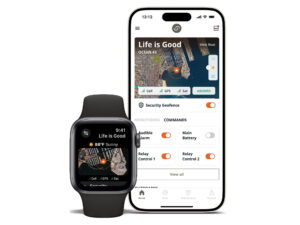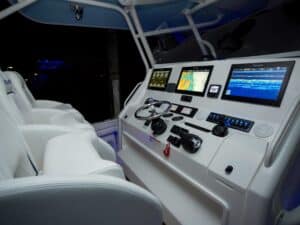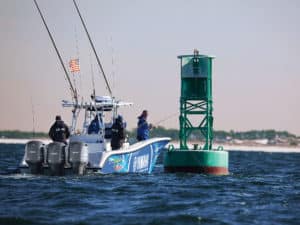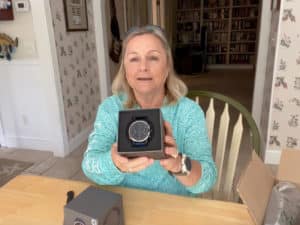Finding live bait — whether you’re fishing with it or not — ranks as an invaluable skill for all anglers. Find the bait; find the fish. The adage is timeless.
Today’s top captains also know that when they understand and employ the latest marine electronics, they simplify the bait search.
The most obvious technology for finding bait involves sonar, but anglers also turn to their chart plotters, AIS, and radar systems for determining likely depth parameters and locating anchored ships and diving birds. In 2015, sonar looks very different from past systems and can include traditional 2-D fish finding, side and down imaging, CHIRP, and all‑around viewing.

New View
Later this year, Lowrance and Simrad users will be able to access an even newer sonar technology: StructureScan 3-D. “When you go past something with the current StructureScan [side-scan sonar], you see a long shadow behind the object. With 3-D, things on the bottom stand up; objects stick up off the bottom,” says Lucas Steward, Lowrance product line director. “We’re using boat movement to create the 3-D world. It’s triangulating the 3-D position.”
A newly designed transducer with multiple elements and a sonar module ($999 for the package), compatible with Lowrance HDS Gen3 and Simrad NSS evo2 units, also differentiates the bottom from animate objects using different colors.
With the new 3-D product, engineers also doubled StructureScan’s current range to 600 feet on either side of the boat. Like existing side-scan units, this one works best at slower speeds, and its signal fans out in a thin, vertical slice from the transducer — which creates photolike imagery.
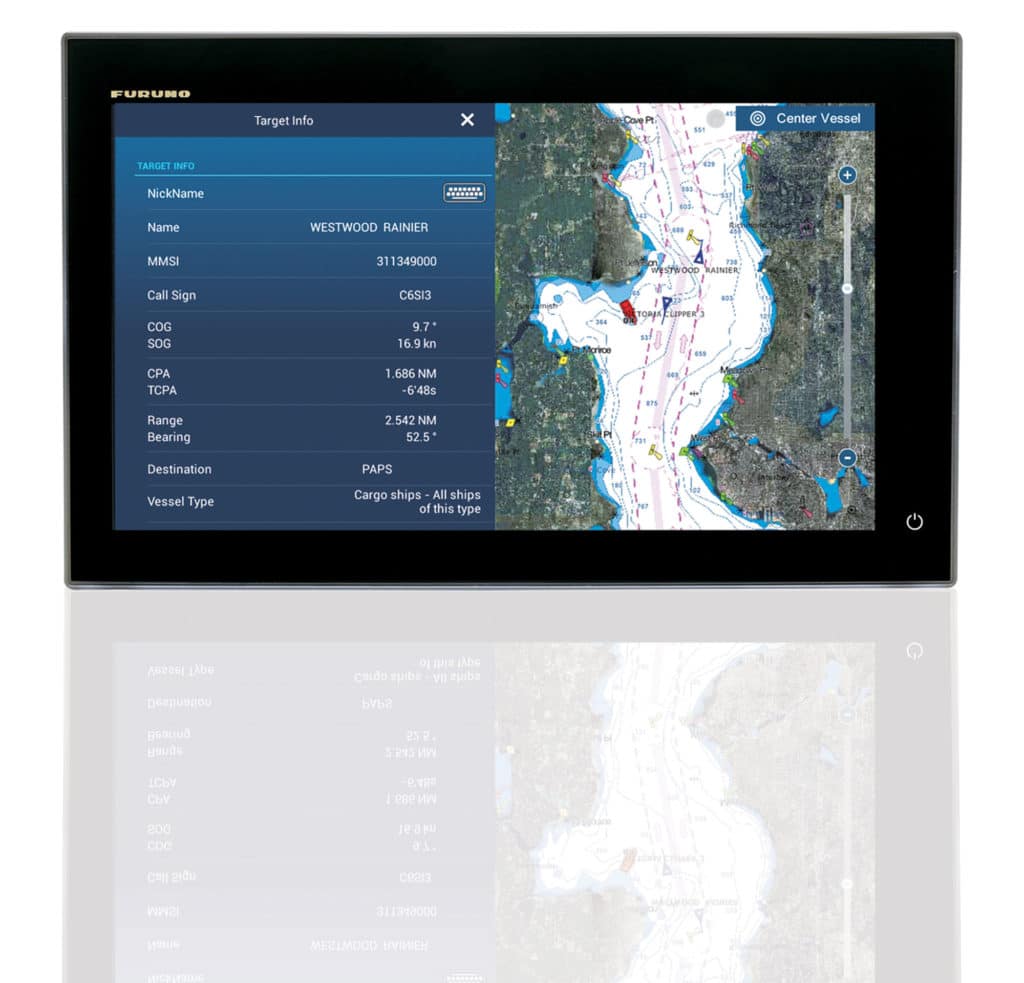
Other Views
With such 3-D technology, the underwater world will be painted plainly — an obvious advantage for finding bait and fish. But other current high-definition fish-finding units can be nearly as dramatic.
Team Tuppens tournament captain Steve Sprague says he discovered the wisdom of his Garmin SideVü system in June while fishing an event in Cape Canaveral, Florida. “We ran down the beach and found birds diving. We could see the bait come up, but they were moving so fast and the water was murky,” says Sprague, owner of Tuppens Marine in Lake Worth, Florida. “I started looking at SideVü. I could see the schools shooting by the boat. Once I marked them, I’d tell our guy to blind-cast with the 8-foot net. He threw three times and we filled our well.”
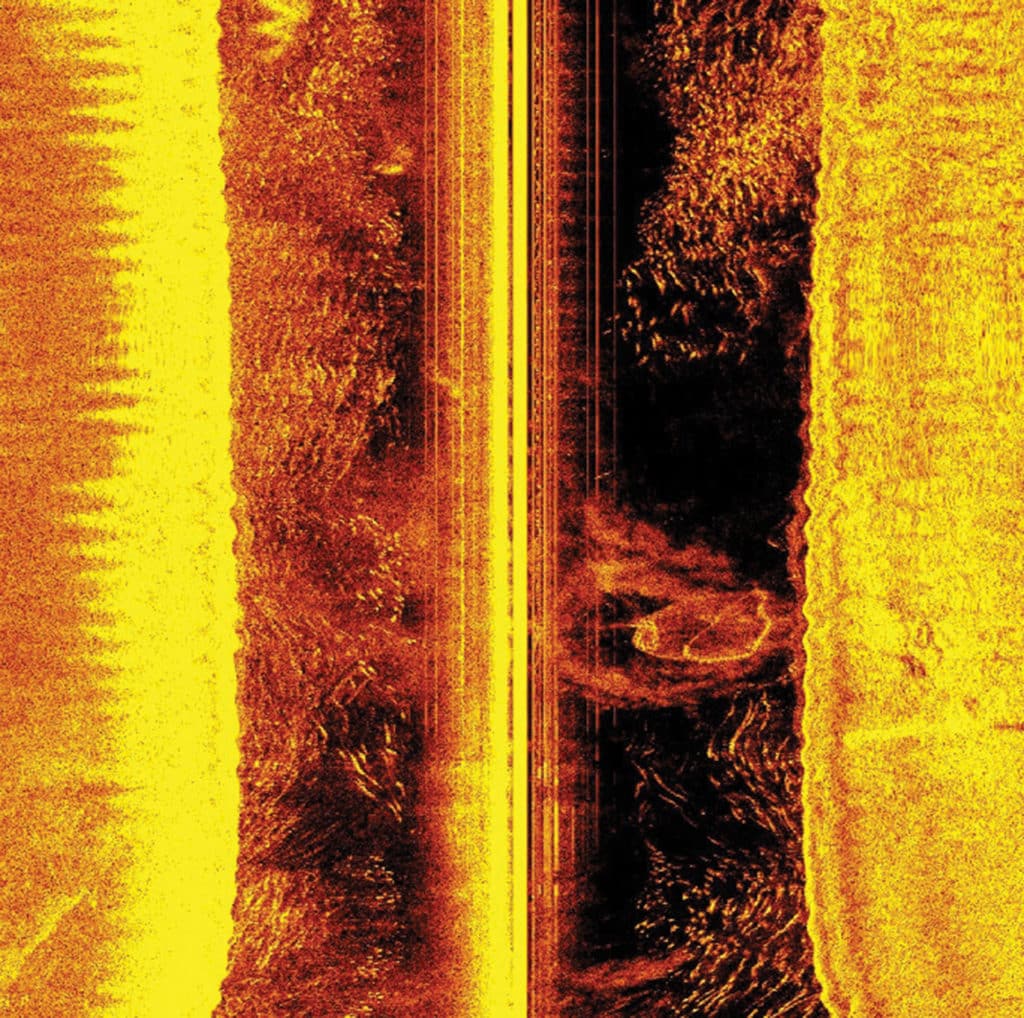
Side imaging, combined with down imaging, CHIRP and even a traditional sonar view — shown in split-screen format on a multifunction display — offers significant information. In shallow depths, a traditional transducer signal fans out, covering a fairly small-diameter cone of water beneath the boat. Adding side- and down-imaging views extends an angler’s field of vision and gives him directional guidance.
In one example, Bill Carson, field marketing manager for Humminbird, demonstrates the subtleties of such usage. One of the screenshots above, shows where he marked all four corners of a wreck off Stuart, Florida.
Knowing that bait like to orient in eddies out of strong currents, he studied the down-current side of the structure. (He gauged the current direction from the conditions at the surface, though this can be misleading.) Sure enough: bait!
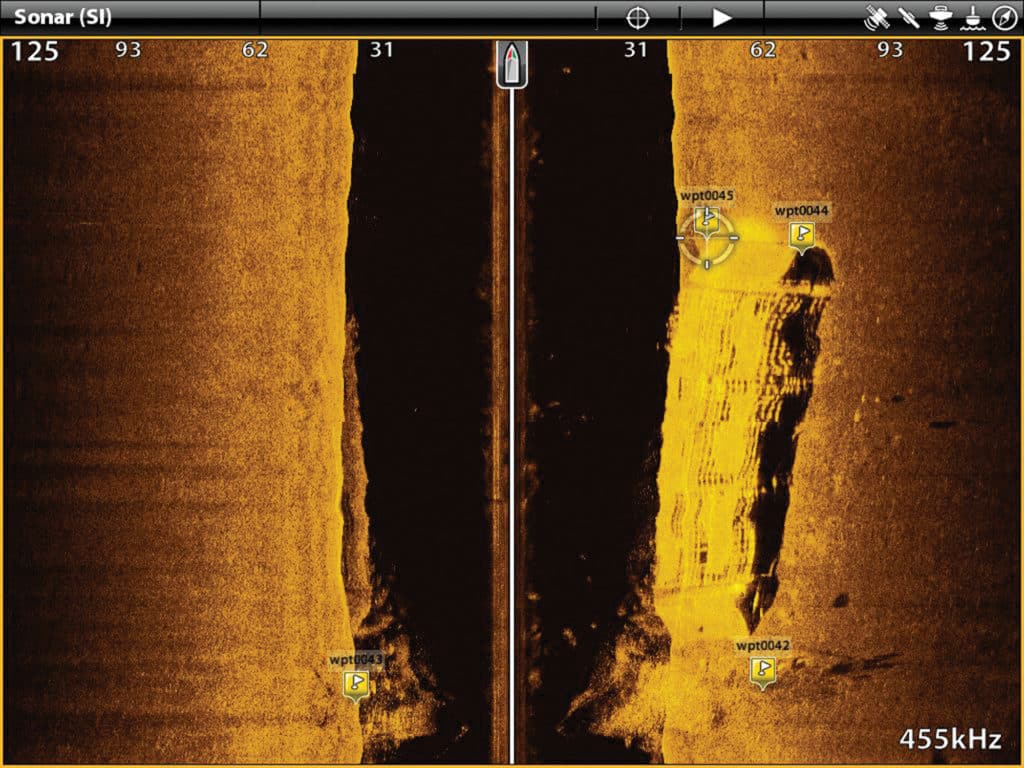
Plotter Trick
Capt. Tom Pitasi of Coastal Fishing Charters in Waterford, Connecticut, exclusively fishes artificials, but he uses his Raymarine CHIRP and DownVision technology as well as a little-known chart function on his a98 multifunction display (with Navionics Platinum+) to locate bait schools that might hold striped bass and bluefish.
High-frequency CHIRP signaling really clarifies the sonar picture with superior target separation, he says. “But sometimes it’s easier to decipher bait holding close to the bottom using DownVision. The bait stands out a little bit more.”
In addition, he employs a feature called “Deep Water From,” or shaded depth range, to locate the best spots for bait to hold. Out of the box, a Raymarine a98 would be set to show a change in screen color at 50 feet. “That’s fine if you’re an offshore person and you want to highlight a 50-foot hump in 500 feet of water. But inshore, that chart becomes one color,” he says.
Pitasi sets his shade depth at 18 feet. “This allows you to navigate by color. You can pick out the areas you think are worth investigating.”
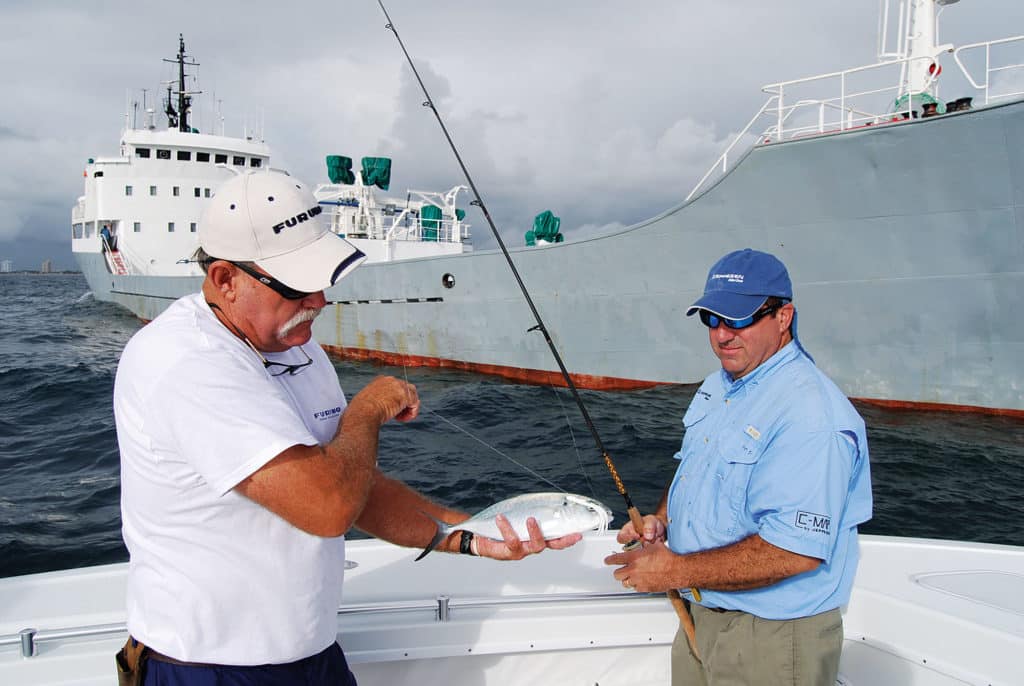
Radar and AIS
Normally, open-array radar antennas pick up bird movement better than radomes. Close scrutiny can help anglers know whether the birds are actively feeding and whether they’re orienting to a stationary object such as a boat or buoy.
Raymarine marketing manager Jim McGowan says all of his company’s HD color radars offer a bird mode, designed by software engineers to distinguish bird targets. The program emphasizes birds in blue by looking for signals stronger than sea clutter, and keeping them on the screen longer.
A “wakes mode” then draws trails behind any target in motion, so anglers can see whether the blue targets’ movement is compatible with bird activity.
Radar can help, though coastal areas can throw a high volume of signals, says Capt. George Mitchell, a longtime tournament pro who uses Furuno electronics. But AIS is really key to locating bait both inshore and offshore. “I’ve had an AIS receiver forever, and prior to that, I looked at marinetraffic.com,” Mitchell says. “If you’re looking for blue runners, they’ll show up within hours of a ship anchoring.”
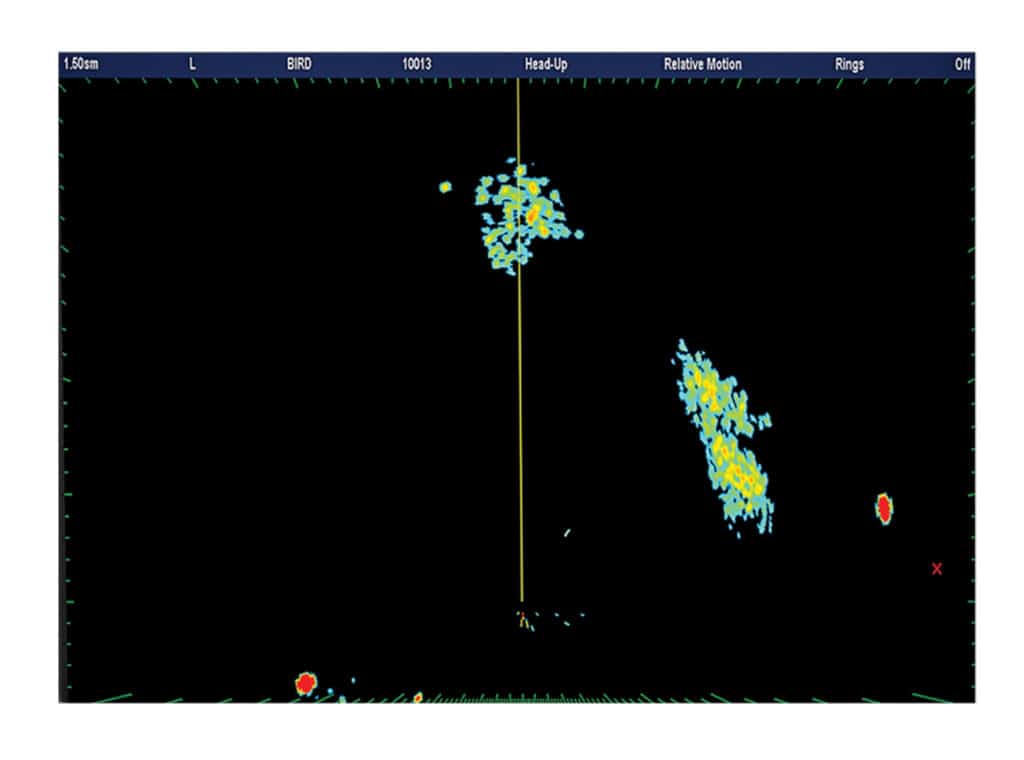
With AIS, you can identify a ship and hail it on the VHF radio. Normally, he says, the crew members are friendly and will tell you how long they’ve been in port.
Mitchell continues: “I also like to identify the important factors on a ship — the anchor and the crew’s quarters. The runners can hug the anchor chain, and that gives them more security. Typically, on coastal freighters, the crew’s quarters are up front. That’s where the garbage goes overboard. That can be absolutely fantastic.”
To mark the bait, Mitchell uses his Furuno DFF1-UHD CHIRP module and high-frequency CHIRP transducer, which send high-definition targets to his NavNet TZtouch display. He says he can sometimes tell the difference between bait species, or at least guess at them, based on where and how they’re schooling.
At the end of the day, though, fishing experience and common sense have to partner with technology. Mitchell says, “Knowing your machine and your target species makes you a better angler if you can put it all together with seasons and locations.”

